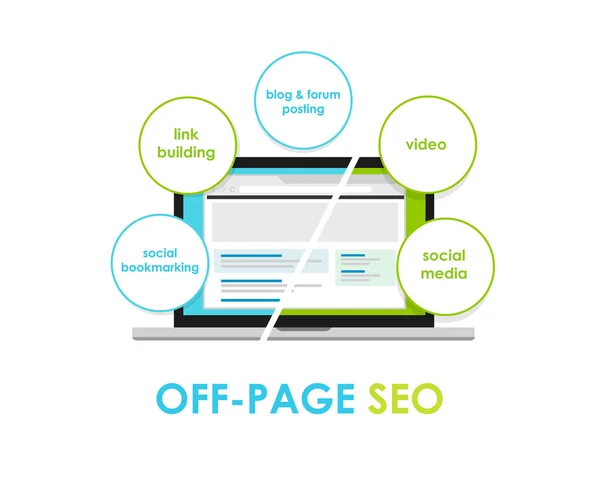Off-page search engine optimization (SEO) is any activity you do outside your website that increases your rankings in the search results. This way, users can find you quickly and easily.
This technique has been around for a long time, and so the internet is inundated with so many amazing off-page SEO tips that you can try.
This post shares three strategies you might not know can also support your off-page SEO efforts.
3 Off-Page SEO Ideas That Can Deliver Good Long-Term Results
The most effective off-page SEO tactics revolve around three general ideas:
- Improve internal linking
- Boast brand mentions and citations
- Strengthen your social media engagement
The tips below also tackle these three, but we also hope to give you other approaches you might not have tried or paid more attention to because you are not aware they can also work for off-page optimization.
Let us begin.
1. Pour Your Energy into Creating the Best Content for a Topic
You can never encourage people to link to your site, share your post, or even talk about your brand if you do not have any noteworthy content. But then, what makes a compelling article?
Usually, they share the following characteristics:
- Fresh. It means they provide a different, interesting, or even unique perspective or angle to a subject no matter how mundane or trendy it is. To achieve this, you should be an expert in your niche or at least possess more advanced knowledge than your audience or competitors.
- Helpful. The content does not have to be life-changing, but your users should be able to take something from it. Does it inspire them to take action? Is the article opening their minds to new ideas?
- Search-engine-friendly. According to Digital Authority Partners (DAP), the most sharable content follows the best practices or recommendations from search engines, particularly Google. For example, it uses the right keywords at the right places, shares clickable hyperlinks, and has optimized meta tags.
- User-friendly. User experience has become one of the vital ranking signals for a reason: you want readers to feel satisfied. Good content, therefore, uses bullet points and proper headings to break up the text, contains visuals like photos and infographics, and loads quickly on mobile.
2. Pass on the Link Juice by Building Topic Clusters and Silo Pages
Do you know that internal linking is one of the most common digital marketing methods that can also improve your off-page link-building strategies? When you pass on the link juice, or SEO power, to other pages, you can boost their rankings. In the process:
- Your visibility enhances since more pages rank well on the search results.
- It makes your website more attractive to influencers, content creators, digital marketers, and website owners, who like to take advantage of your domain authority.
- It further cements your credibility and expertise, making your article trustworthy.
Effective internal linking usually involves two different but interrelated topic modeling concepts:
- Silo page, which is commonly a static page that serves as a repository or organizer of different connecting topic clusters
- Topic cluster, which is a group of pages focusing on one particular keyword or topic but also has links to the core silo page and other articles
Let us have an example to illustrate the relationship between these two. Let us say that you are an e-commerce store selling home decor.
- The silo pages often act as categories, especially if your website is still small. In this case, you can have “Home Decor,” “Kitchen and Dining,” “Living Room Furniture,” and so on.
- You can further break these down into subcategories. Your Kitchen and Dining section, for instance, includes “Tableware,” “Storage and Organization,” and “Cooking Utensils.”
- The topic clusters then provide the content to optimize each of the silos. Every cluster has the following parts:
| Cluster Element | Description | Example |
| Pillar page |
|
What You Need to Know About Tableware |
| Subpages or subtopics |
|
|
| Hyperlinks | Links that connect:
|
3. Build Relationships with Other Creators and Marketers
Link building is the foundation for off-page SEO. Even social media engagement and brand mentions or citations are all about creating backlinks at their core.
These links that point to your site mean many things:
- Your article is valuable enough to share with other people’s audiences.
- Because you provide helpful content, search engines reward you with higher placement in the search results.
- Your target market sees you as an expert, so converting them to customers is easier.
Many marketers, though, make the mistake of sending a single email to a website owner, hoping they will find value in the article and add its link somewhere on one of their pages.
A real off-page link-building strategy focuses on building a good relationship with other creators, marketers, website owners, influencers, and even your audience.
So instead of delivering a run-of-the-mill email, take the time to:
- Study the brand you want to link to. How does their niche relate to yours? Can their audience find your articles significant? What makes your content worth linking to? Does it provide new information, a guide that few people talk about, or something else
- Offer beyond a content link. You can still increase brand mention, engagement, and backlinks through other creative means. These include launching a webinar, collaborating with others on a podcast, creating hashtags for user-generated content, and so on.
- Find the right influencers. Search for people who are already talking about your niche in their podcasts, blog posts, or social media accounts and reach out to them. Tell them you are open for interviews, guest posts, or collaborations.
- Help them improve their content. Do some sites have broken links pointing to your pages? Do you know topics that could use some more details that you can provide? Being genuinely helpful creates a win-win situation, where you get more link love and other people get quality content.
Summing Up
Engaging on social media, writing press releases, or doing guest blogging can still help your off-page SEO plan. But you can do more.
You can explore other techniques, beginning with these three. If you want more ideas, a digital marketing firm has loads of knowledge and experience to share.






